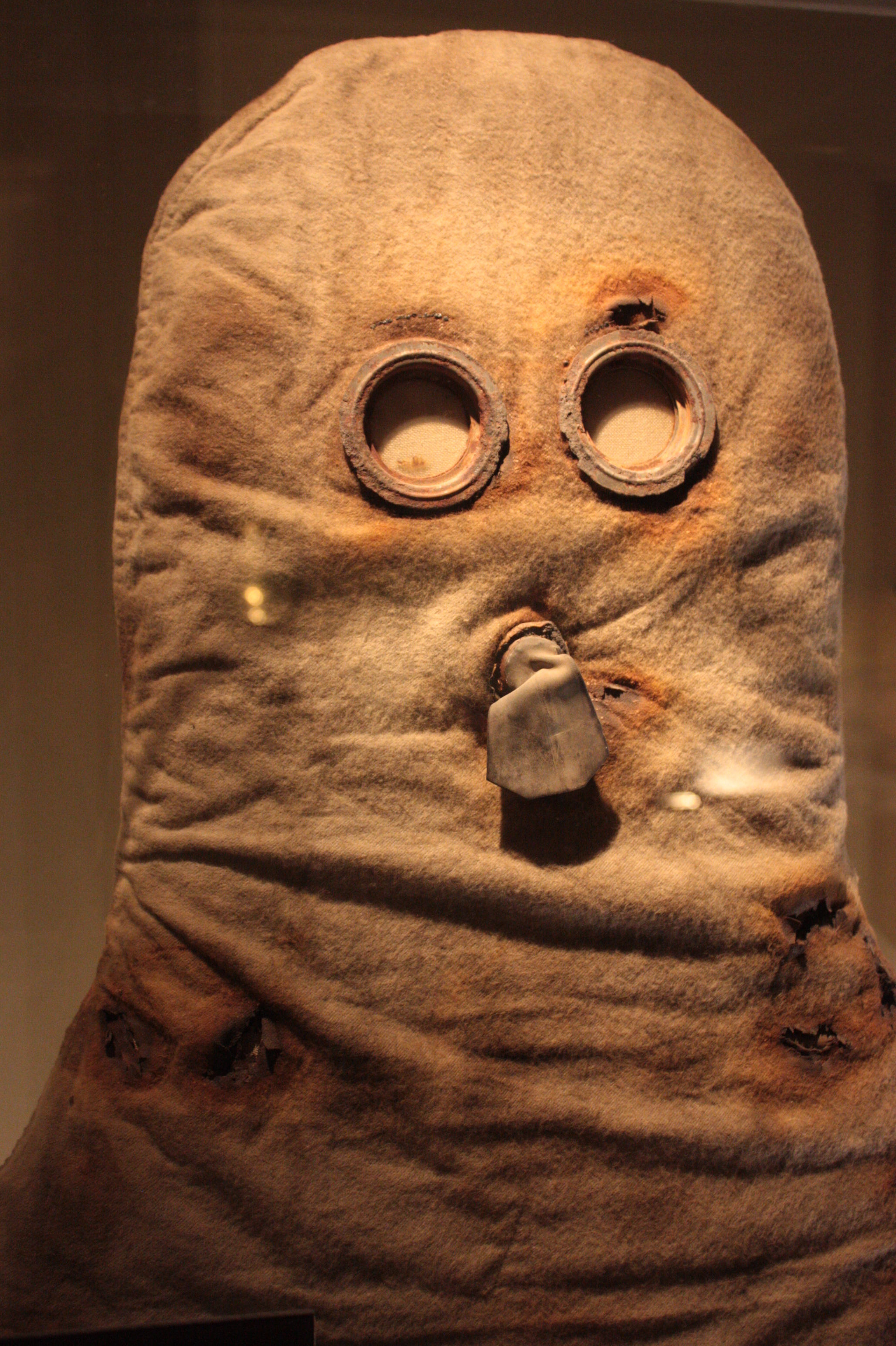PH Helmet on:
[Wikipedia]
[Google]
[Amazon]

 The P helmet, PH helmet and PHG helmet were early types of
The P helmet, PH helmet and PHG helmet were early types of
The gas mask database: The UK
World War I military equipment of the United Kingdom Gas masks of the United Kingdom {{UK-mil-stub

 The P helmet, PH helmet and PHG helmet were early types of
The P helmet, PH helmet and PHG helmet were early types of gas mask
A gas mask is a mask used to protect the wearer from inhaling airborne pollutants and toxic gases. The mask forms a sealed cover over the nose and mouth, but may also cover the eyes and other vulnerable soft tissues of the face. Most gas mask ...
issued by the British Army
The British Army is the principal land warfare force of the United Kingdom, a part of the British Armed Forces along with the Royal Navy and the Royal Air Force. , the British Army comprises 79,380 regular full-time personnel, 4,090 Gurk ...
in the First World War
World War I (28 July 1914 11 November 1918), often abbreviated as WWI, was one of the deadliest global conflicts in history. Belligerents included much of Europe, the Russian Empire, the United States, and the Ottoman Empire, with fightin ...
, to protect troops against chlorine
Chlorine is a chemical element with the Symbol (chemistry), symbol Cl and atomic number 17. The second-lightest of the halogens, it appears between fluorine and bromine in the periodic table and its properties are mostly intermediate betwee ...
, phosgene and tear gas
Tear gas, also known as a lachrymator agent or lachrymator (), sometimes colloquially known as "mace" after the early commercial aerosol, is a chemical weapon that stimulates the nerves of the lacrimal gland in the eye to produce tears. In ...
es. Rather than having a separate filter for removing the toxic chemicals, they consisted of a gas-permeable hood worn over the head which was treated with chemicals.
The P (or Phenate) Helmet, officially called the Tube Helmet,
appeared in July 1915, replacing the simpler Hypo Helmet
The Hypo helmet, or British Smoke Hood (its official name), was an early British World War I gas mask, designed by Cluny MacPherson.
Earlier designs
The German army used poison gas for the first time against Entente troops at the Second Battle ...
. It featured two mica
Micas ( ) are a group of silicate minerals whose outstanding physical characteristic is that individual mica crystals can easily be split into extremely thin elastic plates. This characteristic is described as perfect basal cleavage. Mica is ...
eyepieces instead of the single visor of its predecessor, and added an exhale valve fed from a metal tube which the wearer held in his mouth. The exhale valve was needed because a double layer of flannel – one treated and one not – was needed because the solution attacked the fabric.
It had flannel layers of cloth-dipped in sodium phenolate
Sodium phenoxide (sodium phenolate) is an organic compound with the formula NaOC6H5. It is a white crystalline solid. Its anion, phenoxide, also known as phenolate, is the conjugate base of phenol. It is used as a precursor to many other organic ...
and glycerin
Glycerol (), also called glycerine in British English and glycerin in American English, is a simple triol compound. It is a colorless, odorless, viscous liquid that is sweet-tasting and non-toxic. The glycerol backbone is found in lipids known ...
and protected against chlorine and phosgene, but not against tear gas. Around 9 million were made.
The PH Helmet (Phenate Hexamine) replaced it in October 1915, and added hexamethylene tetramine, which greatly improved protection against phosgene and added protection against hydrocyanic acid
Hydrogen cyanide, sometimes called prussic acid, is a chemical compound with the formula HCN and structure . It is a colorless, extremely poisonous, and flammable liquid that boils slightly above room temperature, at . HCN is produced on an ind ...
. Around 14 million were made and it remained in service until the end of the war by which time it was relegated to second line use.
The PHG Helmet appeared in January 1916 and was similar to the PH Helmet but had a facepiece made of rubber sponge to add protection against tear gas. Around one and a half million were produced in 1916–1917.
It was finally superseded by the Small box respirator in 1916, which was much more satisfactory against high concentrations
of phosgene or lachrymators.
References
External links
The gas mask database: The UK
World War I military equipment of the United Kingdom Gas masks of the United Kingdom {{UK-mil-stub